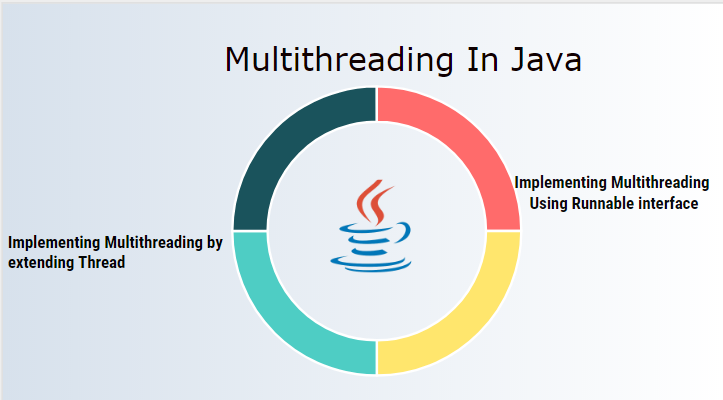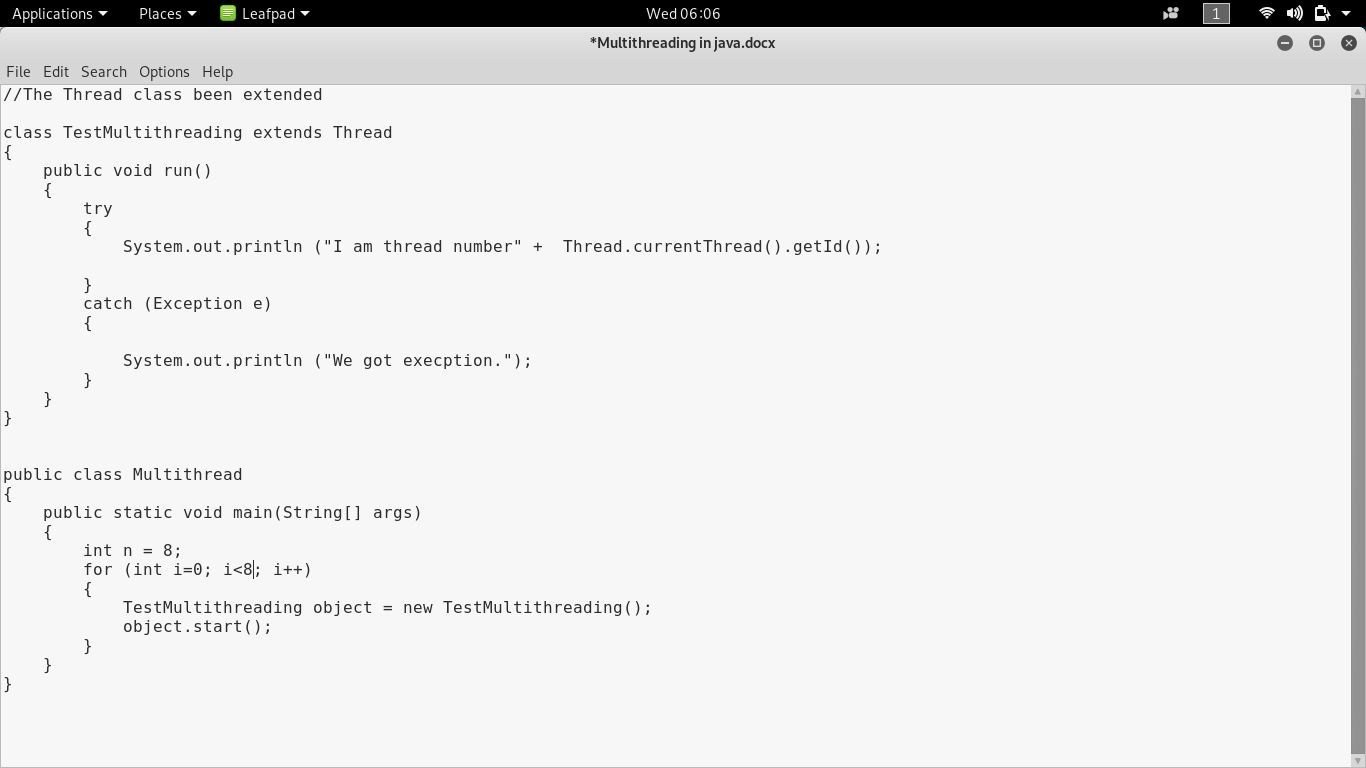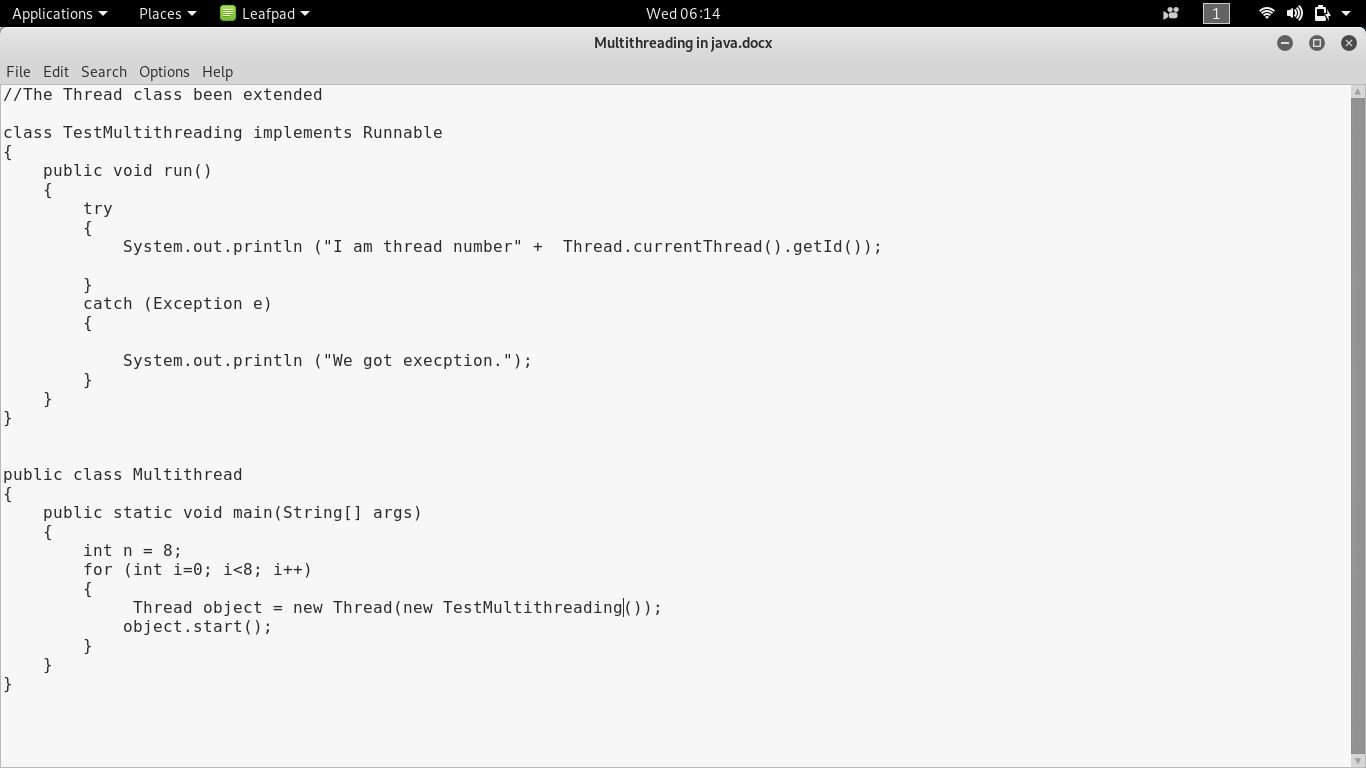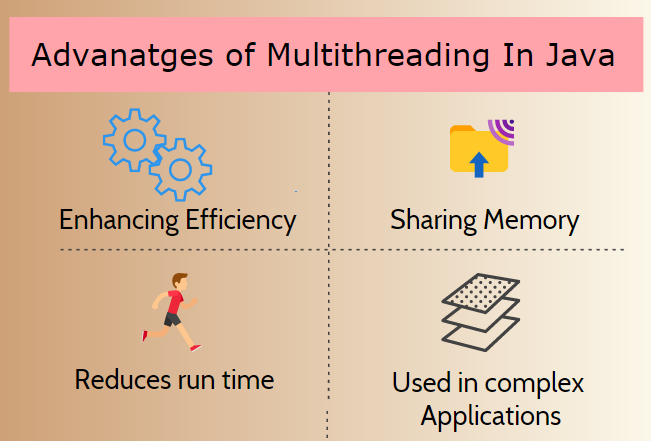Updated March 13, 2023

Introduction to Multithreading in Java
Multithreading in Java may also be explained as a special feature that reduces the time to run an application by the mean of threads. The threads are usually more in number in complex programs, and their usage depends on the program’s requirement. Threads have to coordinate with each other in order to generate the expected output.
In Java, the multithreading feature is leveraged to develop an application in which small parts of any program can run in parallel to each other. The execution of the threads simultaneously makes the program very efficient and helps optimize its CPU’s optimal utilization. Based on the requirement of the function, one thread can wait until the other is executed.
What is Multithreading?
Multithreading could be defined as the programming language’s functionality to get the various tasks executed simultaneously. It is a common feature that facilitates simultaneous thread execution. The thread is nothing but a small task that is supposed to run concurrently.
The threads are assigned with numbers from 0 to 10. The threads are allocated with numbers from 0 to 10. The thread with a higher value has a higher priority and vice versa. The thread with value 8 will execute before the thread with priority 2. In this case, the thread with value 2 has to wait until the thread with value 8 shows the green signal for execution to the thread with 2 as the priority.
Understanding / Implementing Multithreading
Let’s explore how we can implement multithreading in Java. In order to implement it, we have to use either the Thread class or the runnable interface. When we are intended to implement it by extending the Thread class, we can create an object and invoke the run method (we will see later), and if we have to bring it using a runnable interface, the thread has to be instantiated.
In actual terms, it is implemented using the run function. The run function can be defined as the special function that starts the thread execution. This function could be invoked using the start function that has to be used with the object to bring the thread into execution. Once the thread starts, it will perform all the tasks defined underrun(). Based on the priority, the thread is used to choose which one has to run and which one has to wait.
Working with Multithreading
In this section, we will learn how we can code in Java to implement multithreading. As discussed in the previous section, we will use the run() and start() functions to bring the thread’s multiple executions.
Below is the picture that has code written over it to apply multiple threading.
1. Implementing Multithreading by extending Thread
The above example starts creating threads 8 times as mentioned there and ensures that the number assigned with the threads should start from 8. The output for this program will be below.
Output:
I am thread number 8.
I am thread number 9.
I am thread number 10.
I am thread number 11.
I am thread number 12.
I am thread number 13.
I am thread number 14.
I am thread number 15.
2. Introducing by using Runnable interface
This example is devised by implementing the Runnable interface. It differs from the last example because we had to create the Thread class object to use that with a start function. The output will be the same as the previous program. Below is the output.
Output:
I am thread number 8.
I am thread number 9.
I am thread number 10.
I am thread number 11.
I am thread number 12.
I am thread number 13.
I am thread number 14.
I am thread number 15.
Advantages of Multithreading in java
When we talk about the quick execution of any program, it just has to perform several operations simultaneously. It is advantageous when making an efficient program that executes quickly at almost no time.
Below are a few common benefits :
- Enhancing efficiency – It makes the application very efficient by making the optimal use of the CPUs. I let the threads use the CPU efficiently by making use of it while other threads wait for some output.
- Sharing Memory – The best part about multithreading is that the thread it uses does not occupy the memory but uses it on a shared basis. Hence, it also makes efficient use of memory by sharing it appropriately.
- Reduces run time – It usually mitigates the time utilized by an application to run the particular program. The time saved by threads could be used for other programs to minimize program execution time.
- Used in complex applications – Threads in application development make it easy to create the modules in the application. They are being used very efficiently to make designing and development easy.
How does Multithreading in java make working so easy?
In the last few sections, we learned how useful it is to use Multithreading in any application to make it efficient. It makes work very easy when developing an application that is supposed to utilize less time to perform any action. In addition to the performance benefits, it also allows the application to use the storage in a shared manner and save the memory.
Every application that processes a huge amount of data or has to perform large computations should use the feature to make it consume less time and offer the correct output quickly. In addition to its common plus points, the program looks a bit complicated. On the other side, if handled properly, it could give the application an edge over other software not comprised of multithreading.
Required skills
We had implemented multithreading in the example section, and we have an idea of how to write any program that uses the multithreading feature. As far as we understood, it is obvious that it is not rocket science and doesn’t require a lot of skill to develop the application. There are a few basic Java skills that one must be aware of to implement correctly in any application.
The fundamental knowledge of Java is essential to work with threads. We had to use either the class Thread or has to implement the Runnable interface to introduce this efficient feature, so it is obvious that one has to know how to work with classes and interfaces. These are the mandatory things that a developer should excel at before getting their hands into developing modules based on threads.
Why should we use Multithreading in java?
Though we are very familiar with the positive side of multithreading, we must know why we should use it in our programs. It is said that behind anything or any action, there must exist some purpose. So getting the precise purpose behind the usage of this is essential. So let’s see what things that make us use it are.
It helps us develop an application that works very efficiently to fulfill the business requirement. Anything that consumes fewer resources is always appreciated. In the same way, this feature enhances storage efficiency and helps us to save resources. It also allows us to design a program that uses less time in execution and makes the user experience very satisfying.
Multithreading in java scope
Multithreading could ultimately be helpful in a competitive era where everyone is rushing to save time. The programs or algorithms designed these days are very complex and request a large set of resources and more than enough time to execute. By introducing this option in the algorithms, we can make the time consumed while the computation is pretty less.
The developer with the application development skill set using threads will be in massive demand as applications’ complexity gradually increases daily. Even in the current period, companies are hiring Java developers like anything, and understanding how threads are implemented can add an edge to your skills. It is always better to know much and correct it so that it can be implemented somewhere, and the case is the same with multithreading.
Who is the right audience for learning Multithreading in java technologies?
When learning something additional, most of us prefer to gain much. Keeping this point in mind, it is a sure thing that folks interested in learning Java could be the best audience for this. To be more specific, students willing to develop an application by standing out of the crowd should learn about threads as they can be used in applications to make it look and work in an extraordinary manner.
In terms of a professional career in Java, one must have to learn multithreading, and it should not be kept optional. Java developer with working experience in core Java should get their hand in learning this module as it is crucial when they try to learn or explore advanced java. When developers try to explore more packages, understanding threads make their work easier.
How will this technology help you in career growth?
This is an excellent part of Java. It is gaining popularity among developers day by day due to the best features it offers. It makes the program or application very useful. From low or mid-size to multinational companies, all are looking for Java developers with working experience in various parts of Java where multithreading is a must.
For Java developers, it adds an edge to their skills and makes them employable. One can barely get any job in Java if they don’t have hands-on practice in multithreading, so if you are looking to grow your career in the field of Java or any other programming language, then you must have an idea about the working of thread and how it could be implemented from scratch.
Conclusion
Overall, multithreading in Java is an essential part that every Java developer should be aware of. It is very helpful in making the program efficient and reducing storage resource usage. It makes the CPUs be utilized optimally to perform well regardless of their complexity. If you want to explore more about threads, you must understand the Thread class and Runnable interface as both offer the way and make it popular among developers. So do your research and let us know if we can help you anyway!
Recommended Articles
This is a guide to What is Multithreading in java. Here we have discussed what is Multithreading in java with implementation, uses, required skills, advantages, and career growth. You can also go through our other suggested articles to learn more –
- What is SQL Server?
- Multithreading Interview Questions in Java
- What is JavaScript?
- Multithreading in Operating System




